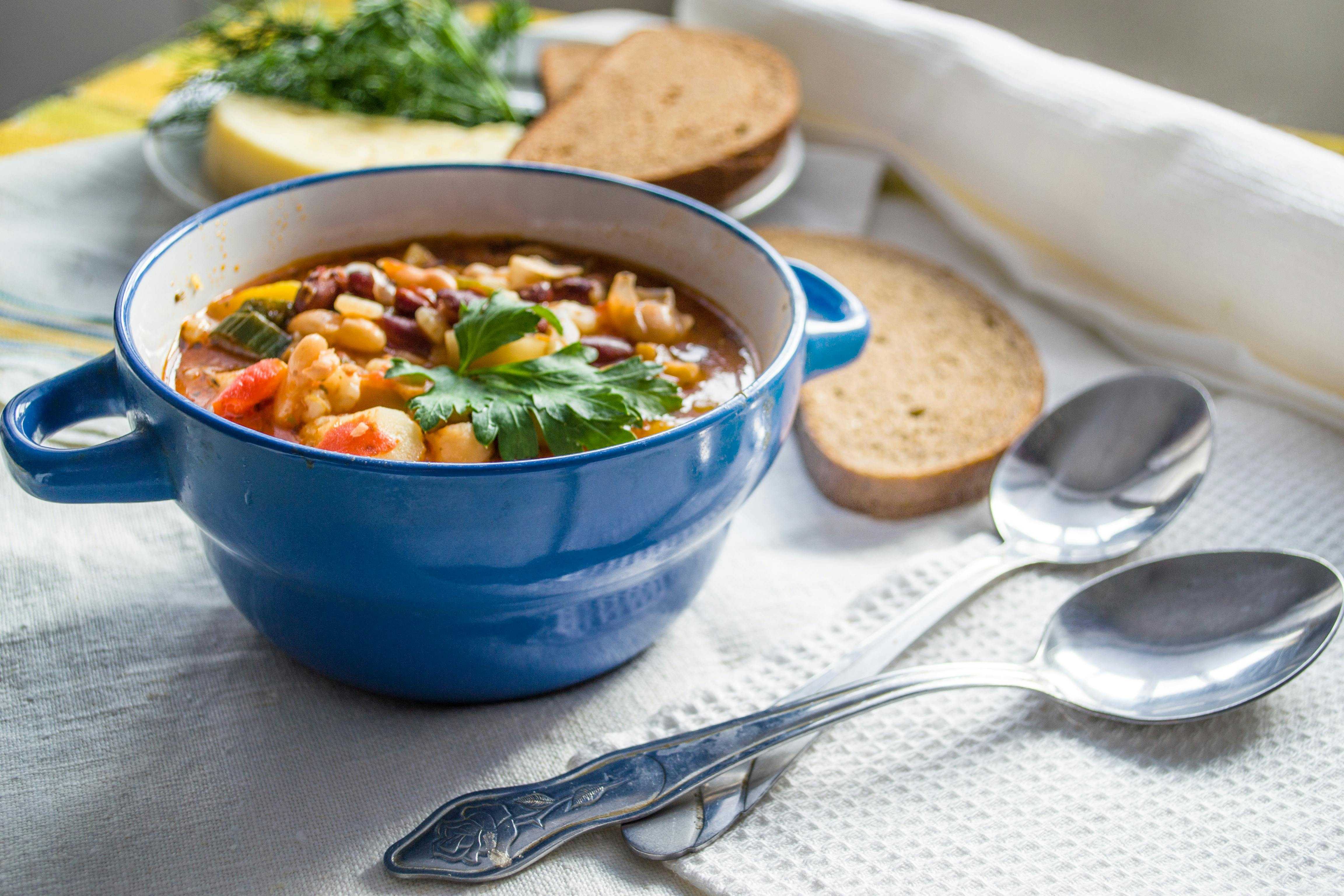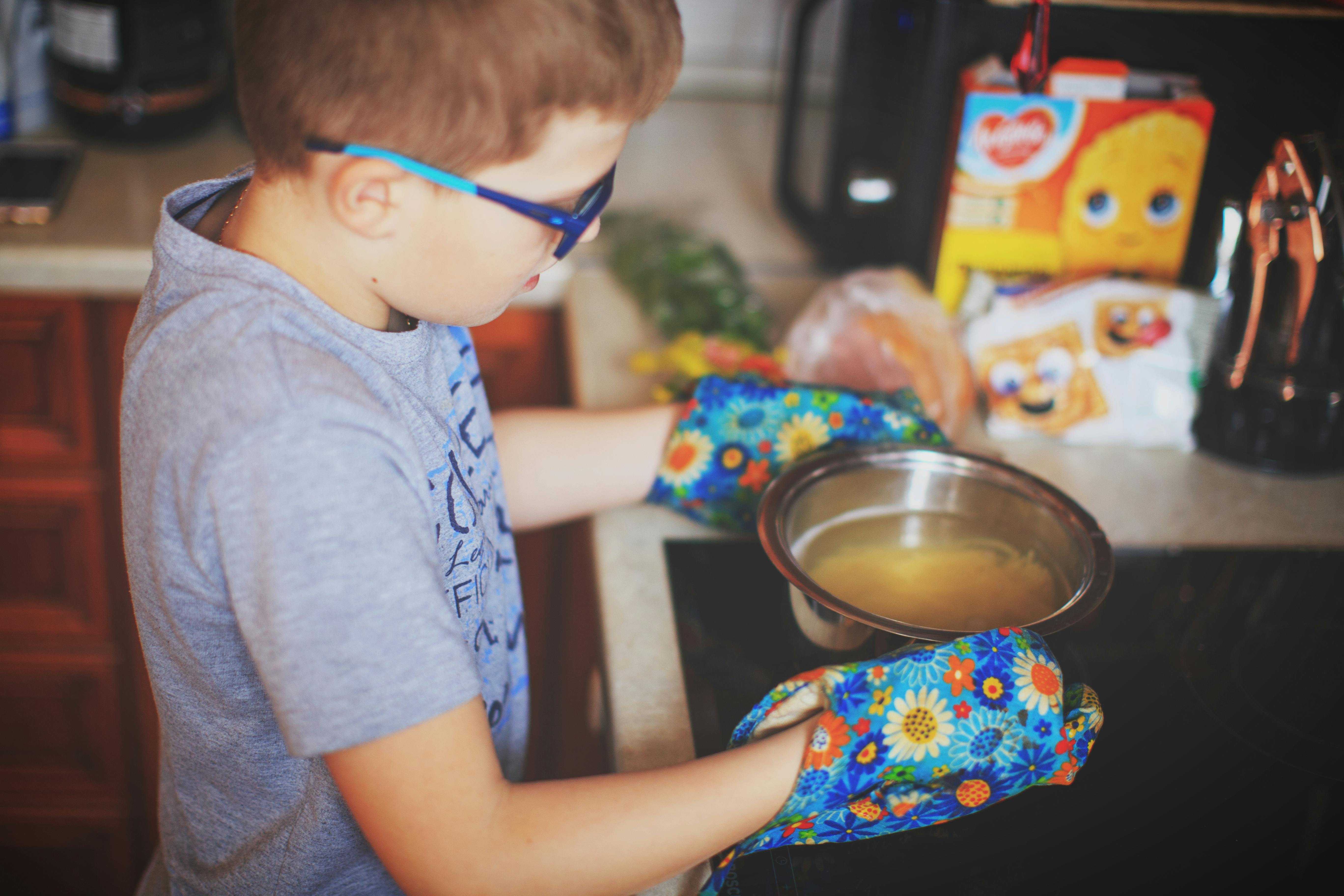
Annually, each American throws away nearly $800 worth of the food they buy either in groceries or takeout (ReFED, 2025). That’s over 150 meals per person. From forgotten produce in the back of the fridge to leftovers that never get eaten, this food waste isn’t just bad for our wallets—it’s bad for our planet. It wastes water and energy, contributes to greenhouse gas emissions, and exacerbates food insecurity in our communities.
Fortunately, sustainable solutions exist, and they start in our own kitchens. Simple habits—like repurposing leftovers, using “ugly” produce, and embracing resourceful cooking techniques—can make a huge difference.
One of the best ways to save money and fight food waste in your home? Make Infinity Soup!
Also known as forever stew or hunter’s pot, infinity soup is a never-ending, ever-evolving meal that transforms scraps and surplus ingredients into something nourishing, delicious, and waste-free.
Nearly every culture has embraced a version of infinity soup using ingredients available locally. French pot-au-feu. Chinese perpetual stew. Hungarian parasztpörkölt. Cajun gumbo. Our ancestors understood that food was precious, and nothing—especially not a perfectly edible “misfit” vegetable—should go to waste.
Now you can bring this global tradition of resourcefulness to your home.

Building Your Infinity Soup
Start with a Base – Every great soup begins with a flavorful liquid. If you have homemade broth from veggie scraps, chicken bones, or beef stock, use that. If not, water works just fine; flavor will build over time. You can also start with the last bit of a dairy-free soup from a previous meal. If using water, toss in aromatics like onion, garlic, and bay leaves to infuse the base with a rich foundation.
Add What Vegetables You Have – The beauty of infinity soup is that nothing goes to waste. Wilting kale? Toss it in. A lonely carrot? Chop it up. Even odds and ends, like broccoli stalks, tomato tops, or the scraps from bell peppers, add texture and nutrients. Those “misfit” veggies look just as good once they’re diced and simmered. This is the perfect way to clear your fridge while turning forgotten ingredients into a nourishing meal.
Add Beans and Starches for Heartiness – Dried beans are the MVP of sustainable soup-making; they are cheaper, longer-lasting, and full of fiber and protein. Lentils, black beans, kidney beans, chickpeas, and split peas naturally thicken the broth as they cook. If using dried beans, you can soak and simmer them before adding acidic ingredients like tomatoes, which can slow softening. For extra substance, toss in starches like rice, pasta, quinoa, potatoes, or corn to make the soup even more filling.
Spice It Up – The right seasoning brings everything together. If you’re new to cooking, start with the basics. Garlic, onion, cumin, and paprika add depth without overpowering. Even a little Cajun seasoning (like Tony’s) can bring a variety of flavors together beautifully. If you’re feeling more adventurous, try global spice blends like garam masala (Indian), herbes de Provence (French), or five-spice (Chinese) to switch things up. Remember, you can always add more, but you can’t take it out. Season gradually and taste as you go.
Keep Dairy Out – Dairy can turn sour if left in the pot too long, making it tricky for an ongoing soup. Instead, opt for plant-based thickeners like blended potatoes, puréed beans, or coconut milk (in small amounts). These alternatives add creaminess without the risk of spoilage. If you really want a creamy texture, consider adding dairy only to individual bowls instead of the entire pot.
Optional - Add Meat – A little meat goes a long way. You don’t need much to boost flavor and nutrition—just a handful of shredded chicken, beef scraps, or sausage can enrich the broth. Less popular, more affordable options, like liver or gizzards, are packed with nutrients. If you hunt, venison makes a lean, flavorful addition. Even bones, like a ham hock, can help create a rich, hearty base. If you prefer a plant-based option or are concerned about the health, environmental, or ethical implications of eating meat, you can easily omit this step.
Let the Crockpot Work – A slow cooker or crockpot is an infinity soup game-changer. It uses less energy than a stovetop and allows the flavors to meld beautifully while requiring little attention. Simply set it to low and let it simmer throughout the day. If using a stovetop, keep the heat at a gentle simmer—boiling too hard can break down delicate ingredients too quickly.
Don’t Forget Food Safety - If you're not keeping the soup hot (above 140°F or steaming), refrigerate it overnight to prevent bacterial growth and reheat it the next day. Always reheat food thoroughly to an internal temperature of 165°F or until hot and steaming. (U.S. Department of Agriculture, 2017) If you’re letting the soup cook continuously in the crockpot, be sure to add extra water and keep the setting on low to prevent the stew from drying out or burning.
Add a Little More Each Day – Here’s the secret to true infinity soup: never let the pot run dry. Each day, add water and a little something new—a handful of grains, a fresh batch of chopped veggies, or a new seasoning to keep things interesting. This method lets flavors deepen over time, creating a rich, complex broth. Remember to balance your additions. If it’s getting too thick, add more liquid; if it’s feeling bland, adjust the spices. Just like a good community, a good soup thrives with variety.
Share with Friends, Family, and Neighbors – Cooking is even better when it’s a shared experience. Invite friends or family to contribute an ingredient from their kitchen—maybe a handful of herbs, a scoop of lentils, or the last bit of roasted chicken. Not only does this make the soup more interesting, but it also fosters a sense of community, just like communal cooking traditions around the world. Whether it’s a neighbor in need of a hot meal or a friend looking for a taste of something homemade, infinity soup is a meal meant to be shared.
Infinity soup reminds us that sometimes the most resourceful and sustainable solutions are rooted in what worked in our past. By reducing food waste, conserving energy, and embracing community-minded cooking, we take a small but meaningful step toward fighting hunger in our own kitchens.
References
ReFED. (2025, February). From Surplus to Solutions: 2025 ReFED U.S. Food Waste Report. Retrieved March, 2025, from https://refed.org/downloads/re...
U.S. Department of Agriculture. (2017, June). "Danger Zone" (40F - 140F). Retrieved March, 2025, from https://www.fsis.usda.gov/food...
